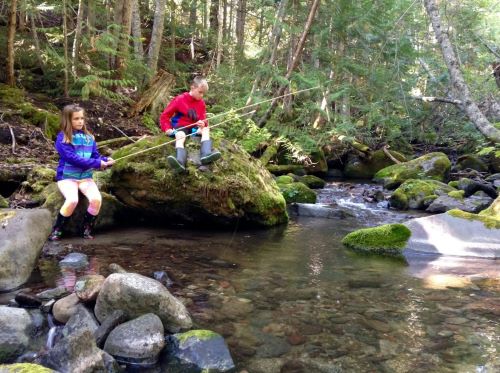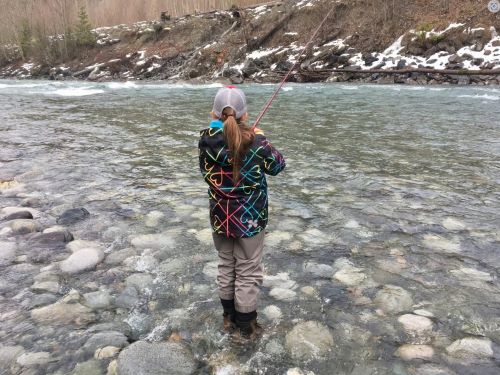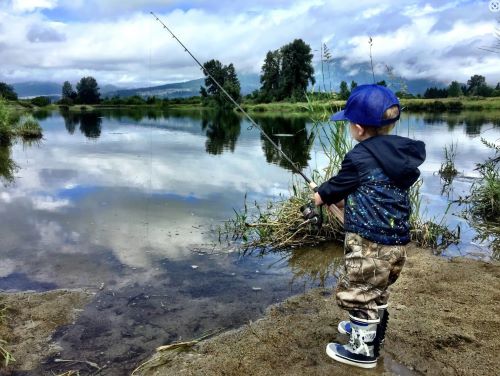Living in a fantastic province with many bodies of water right in our backyard to fuel our addiction to fishing, summer is a great time to get kids interested too. Channel your kids’ curiosity and enthusiasm to discover and enjoy the excitement of sport fishing.
To plan a fishing trip with the greatest potential for kid satisfaction, it’s important that you’re prepared. Make sure your hero status remains at a maximum with the following few sure-fire steps.
1. Choose the right lake
Your goal is to get your kids hooked into as many fish as possible; pick a fishery with the highest potential to catch fish. The GoFishBC.com website is an invaluable resource to find lakes, rivers, and other bodies of water with the “easier-to-catch” species of fish you want for your kids. You’ll also find links to all fishing regulations for the fishery you chose (we all have a responsibility to follow and, in turn, teach our kids the regulations, to be real role models for the sport).

2. Do some casting practice.
Once you know what fishery you’re targeting, teach your children to cast the gear you’ve chosen. You can teach casting in a large back yard (far enough away from windows and sliding glass doors), or just take the kids to a local park. It isn’t a good idea to teach them to cast at the river or lake you’re going to, where all they want to do is catch fish. To begin with, take the hooks off any lures. Always wear eye protection to decrease the chance of an injury. You may need extra patience infiltrating your kids’ train of thought to teach them hand-position and timing. If you’re in need of some teaching help, YouTube.com is great for learning the basics of any type or style of casting.
3. Plan your day out (and bring lots of snacks)
Schedule the fishing day from wake-up time until the time you return home. Make sure you cover all situations with a Plan A, Plan B, and Plan C. A typical Plan A is for ideal conditions: perfect water, perfect spot, and perfect arrival time all picked out. Plan B is for another body of water in case any of Plan A’s criteria don’t pan out. And use Plan C when neither Plan A nor B work out: when you’ve got a crew of “Captain Grumpy Pants” on your hands, a promise to stop at their favourite cafe for a snack and a beverage will usually be enough. Always bring an assortment of snacks to eat while taking a break from fishing or travelling. As kids tire more quickly than adults, keep your trips shorter than you’d normally plan for yourself. Also, be sure someone knows of your plans back at home, who will act quickly in the event of any emergency.

4. Let them reel it in
Don’t touch your kids’ fishing rods. This is all about your children and their chance to hook a fish. I can’t stress this step any more: the magic is in that first fish. Let them catch it!

5. Finish on a high note
Save the day. Knowing when to quit at any given point in the day will help to ensure a positive experience, just might get them interested in a future fishing trip – and cement a new fishing-buddy partnership. Afterward, it’s time to execute the fun part of Plan C: to share the day’s angling highlights over a yummy treat.
Keep the experience fun and exciting – trust in your ability to deliver a fantastic day of fishing adventures.

Author: Ryan Enns
Photo Credit: Ryan Enns, Joe Keno (banner image)
Ryan is a self-employed business owner in Chilliwack, BC. Having a loving wife with a family of three young children, he tries to sneak out to the local lakes and rivers as much as possible. The Chilliwack/Vedder River is five minutes from his front door, so there’s a good chance this is where you’ll find him sharing his passion with family and friends.
